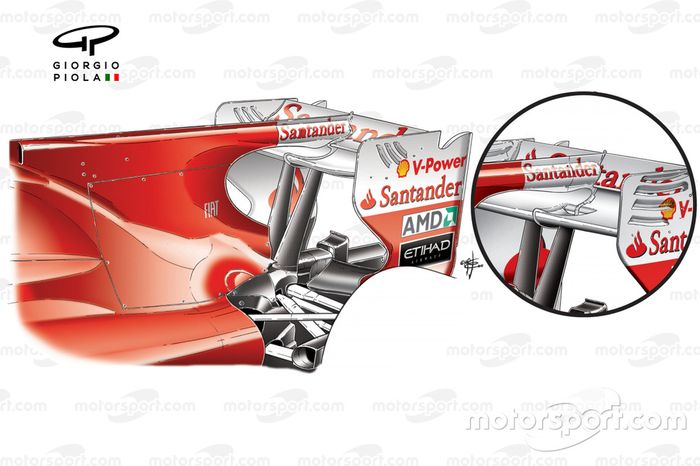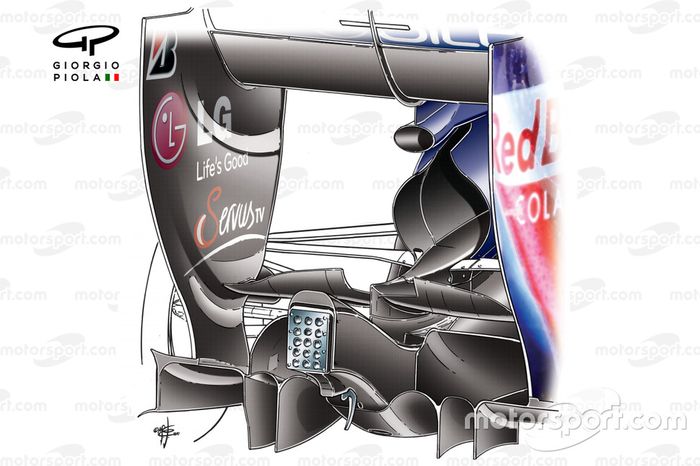Banned: Why McLaren's F-duct was outlawed
When McLaren unveiled its new Formula 1 car in 2010, it hoped that one of the solutions on it would fly under the radar.

Photo by: Sutton Images
Giorgio Piola's F1 technical analysis
Giorgio Piola is the preeminent Formula 1 technical journalist. View our full selection of Giorgio's technical illustrative content
However, secrets don't last long in the fast-moving grand prix paddock and quickly and inevitably the idea took centre stage, as the imaginations of fans, media and teams ran wild.
The F-duct, as it was swiftly dubbed owing to the letter in the Vodafone sponsor logo next to the chassis inlet, was McLaren's novel and absurdly complex way of reducing drag.
Known internally by its project number, RW80, it would become a controversial but must have solution with the FIA allowing its use for just 2010 before being banned thereafter.


The system, which consisted of numerous pipework channels, was operated by the drivers on the straights in order to 'stall' the rear wing, reducing downforce and drag.
So, let's subdivide the system into two parts, the signal pipework that the driver could interact with, denoted 1,2 and 3 on the diagram, and the airflow conduits that delivered airflow to the rear of the car, labelled 4,5 and 6.
The signal pipework is used as a method to control the system, with the driver covering the hole in the cockpit [2] to engage or disengage the system. When the cockpit hole was uncovered, airflow taken in by the chassis snorkel [1] would flow through into the cockpit [2], whilst airflow taken in at the airbox would be fed through the fluidic switch [5] and out through the neutral engine cover outlet [7].
However, when the driver covered the hole in the cockpit, the airflow captured by the chassis inlet [2] would bypass the cockpit and travel through the signal pipework [3] to the fluidic switch chamber.
Once here, it would divert the airflow from the airbox [4] to the upper pipework and deliver it to the rear wing [6]. The airflow would then be fed out of the additional slot in the wing, causing the flow around it to break down and cause the 'stall'.


McLaren's system went through various iterations throughout the season as the team looked to get even more performance from it.
The cockpit hole that the driver used to operate the system was initially covered by the drivers' knee. However, a later version saw the pipework moved further into the cockpit in order that the drivers could use their elbow. Meanwhile, the snorkel inlet on top of the chassis had several redesigns in order to achieve a better flow into it.


The level of downforce and drag reduction required for each circuit also meant that McLaren had different options available to it at either end of the spectrum. Monaco resulted in the team using supplementary inlets and outlets in the mainplane, whilst at Monza it opted to use a conventional low downforce assembly, without the F-duct.

McLaren MP4-25 revised F-duct system, air pushed through mainplane, rather than the top flap (inset)
Photo by: Giorgio Piola
The team also made a revision to the entire rear-end of the assembly in Japan, with the ducting presented to the mainplane, rather than the top flap. This resulted in the corresponding slot on the rear face of the wing being moved too.
The FIA did not prevent the development of the F-duct, even though there were some questionable designs implemented which resulted, in some cases, in one-handed driving to activate it.
However, the FIA eventually opted to ban it for the following season and introduced the hydraulically activated Drag Reduction System.
Be part of Motorsport community
Join the conversationShare Or Save This Story
Subscribe and access Motorsport.com with your ad-blocker.
From Formula 1 to MotoGP we report straight from the paddock because we love our sport, just like you. In order to keep delivering our expert journalism, our website uses advertising. Still, we want to give you the opportunity to enjoy an ad-free and tracker-free website and to continue using your adblocker.

























Top Comments